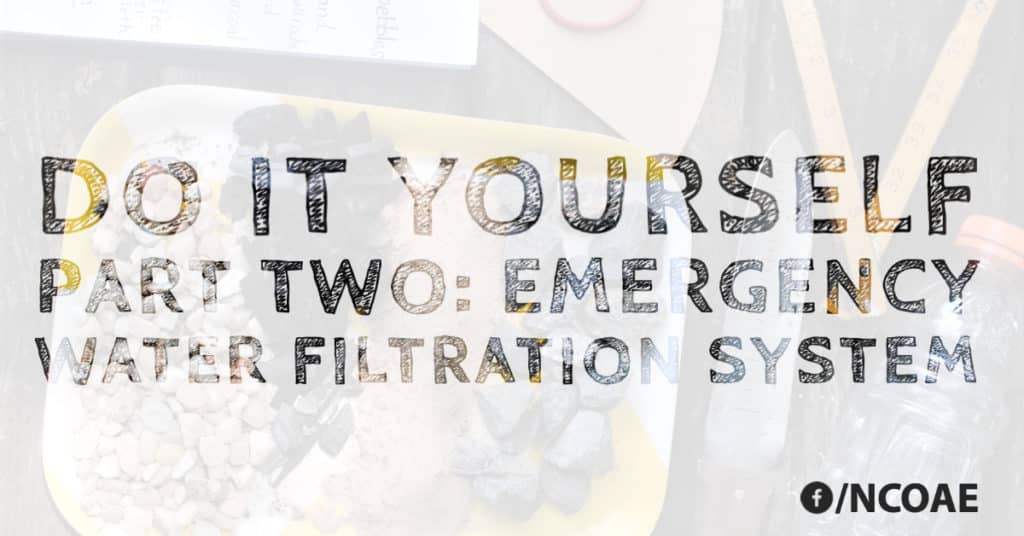DIY Part 2: Emergency Water Filtration System
Backcountry PrepWe’ve all seen those old Western movies where the hero is crawling on the desert floor with an empty canteen and a parched throat. None of us want to experience that torture. It’s bad enough watching the bad acting. Same goes for heading to the backcountry for a weeklong wilderness experience. Nobody wants to be caught short of fresh drinking water.
Here’s where the do-it-yourself approach to human-powered outdoor recreation really comes in handy. The stove we built in Part One of this three-part DYI series, can be seen as an inexpensive alternative to a store-bought stove, and as a tool to help us understand how camping stoves work. Because the more we are familiar with the inner workings of equipment, the more likely we’ll be able to solve challenging issues with that stove.
It’s a given. Your gear will fail you.
That being said, the water filter we’re building today falls more into the understanding of how filtration systems work. Again, if we comprehend how our equipment works, we can better take care of that gear and repair it when it reaches a point of failure. And, if you have spent a considerable amount of time traveling in wild places, you know that your gear is eventually going to fail.
First off, there are three tried and true methods of water purification — boil, filter (purify), and chemical treatment. (For more on this, read Stay Sharp in The Offseason By Following the Way of the Farmer, available here on the NCOAE Blog.)
The industry standard when traveling with groups on guided trips in the backcountry is the use of chemical treatment, typically Iodine. That’s because Iodine is inexpensive, easy to carry, and highly reliable. Many outdoors enthusiasts use a commercially available filter, life straw, or gravity feed system. Not surprising, many don’t know how they work or how to repair them in the backcountry. This lack of knowledge has cut short many a trip due to a water filtration failure.
Once, while traveling in Nepal with a group of students from NCOAE, I was almost forced into building a water filtration system like the one we describe below. One of the participants swore he was having a reaction to the chemical treatment. And, because the mental perception of one individual can affect the entire group, when water quality is in question, we need to overcome that obstacle. My thought was to create a filter system that would not only educate the students but keep everyone safe — whether that danger was perceived or not. Fortunately, it never came to that.
(more…)Do it Yourself Part One: Denatured Alcohol Stove
Backcountry PrepVisitors to our blog are going to react in one of two ways when they see an article with “Do it Yourself” in the headline. You’re either going to avert your eyes and try to find a less intimidating article. Or you’re going to greet this headline and subsequent instructions with enthusiasm and frenzied fervency.
Here’s hoping you’re among the second category of DYI folks who revel in the experience of creating things from scratch. You know, those Junior MacGyvers who’d rather spend a weekend creating a project than spend nine bucks for the same item at the store.
That’s why we’re dedicating the next three posts here on the NCOAE blog to help you find what we hope is the do-it-yourselfer deep in your soul. Here at The National Center for Outdoor Adventure and Education (NCOAE), we have always used the equation of Self + Community + Action = Impact. It’s the notion of making the changes necessary to feel better about yourself and see your role in a community of peers, practice, neighbors, or just society as a whole.
Through our outdoor education and wilderness medicine programs we have helped countless individuals and organizations — through interaction with nature and wild places — to move forward to a more conscious way of living life and perhaps influencing the world around them. Just look at the many companies that were born of DIY thinking. There’s Patagonia, Petzl, Outdoor Research, Swift Industries, Black Diamond, and pretty much everything related to the surf industry.
So, for this installment and the two that follow, we will be exploring the DIY experience of creating equipment destined for human-powered outdoor pursuits, either for fun or out of necessity. We find that DIY projects give you a taste of the experiential education process from the comfort of your own home or garage.
And Part One of this series is how to make a denatured alcohol stove.
Years ago, I made the beautiful mistake of buying “Beyond Backpacking” by Ray Jardine. The mistake? The book inspired me to begin purging my gear, make my own gear, and learn how to go light for less money. Gearing up for a huge trip inspired me to follow the “Ray Way.”
It was around that time that I built my first denatured alcohol stove. The process is straightforward and acquiring the materials can be a lot of fun. For instance, you’ll need to empty a couple of soda or beer cans before you even get started. Any beverage can will work, but some folks would prefer to drain a can of beer. Because building this stove is about the experience and the pursuit of learning. And, of course, the enjoyment.
(more…)TALK TO US
Have any further questions about our courses, what you’ll learn, or what else to expect? Contact us, we’re here to help!


